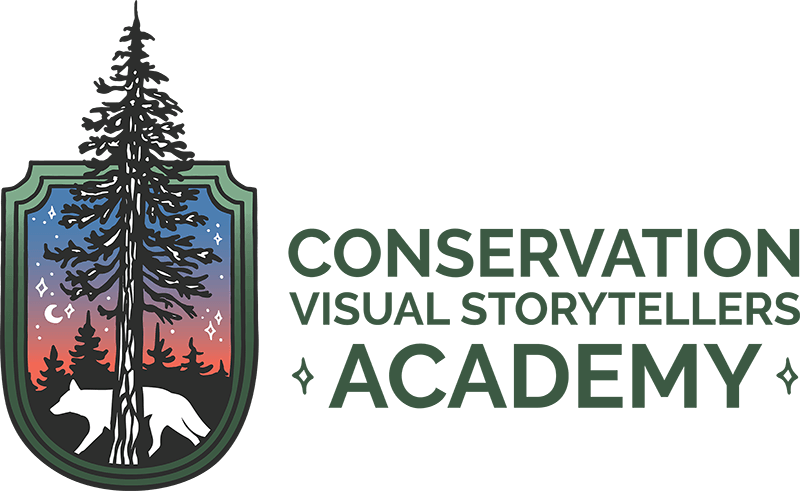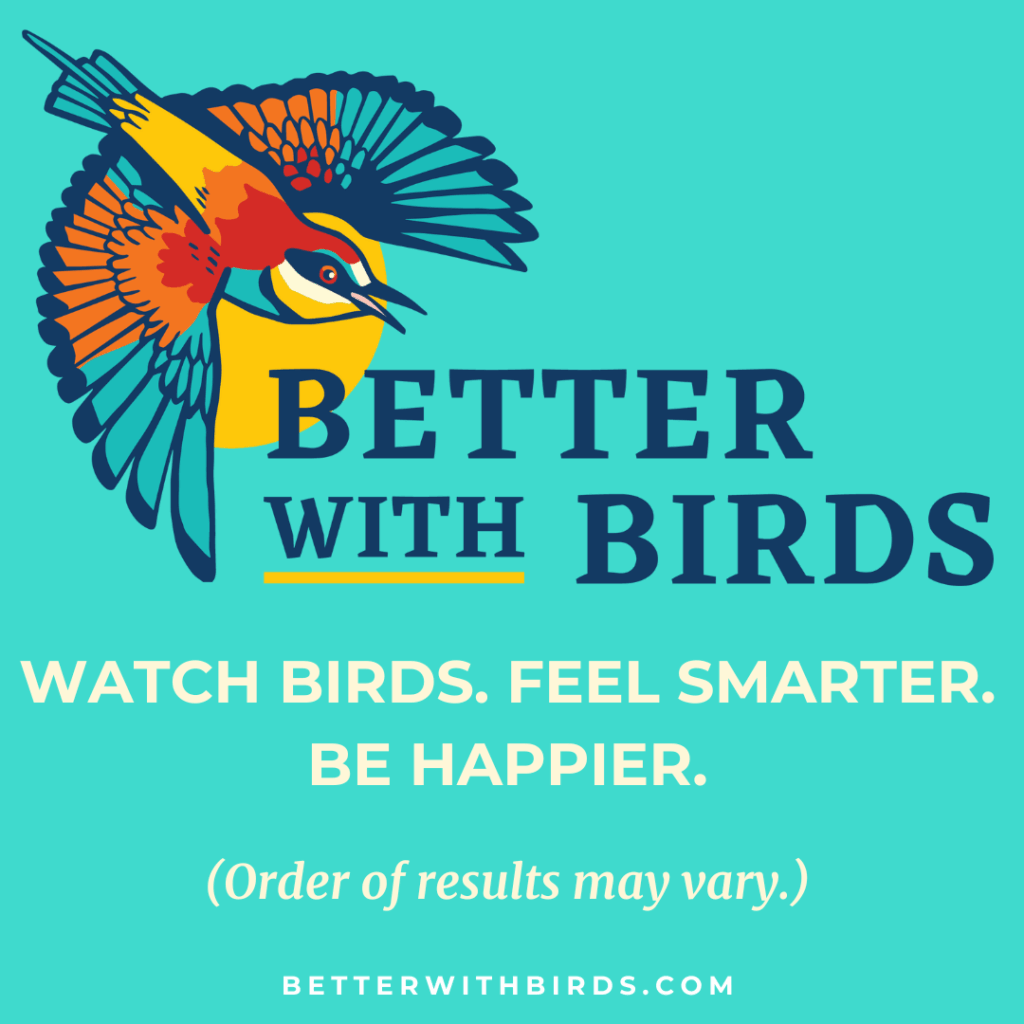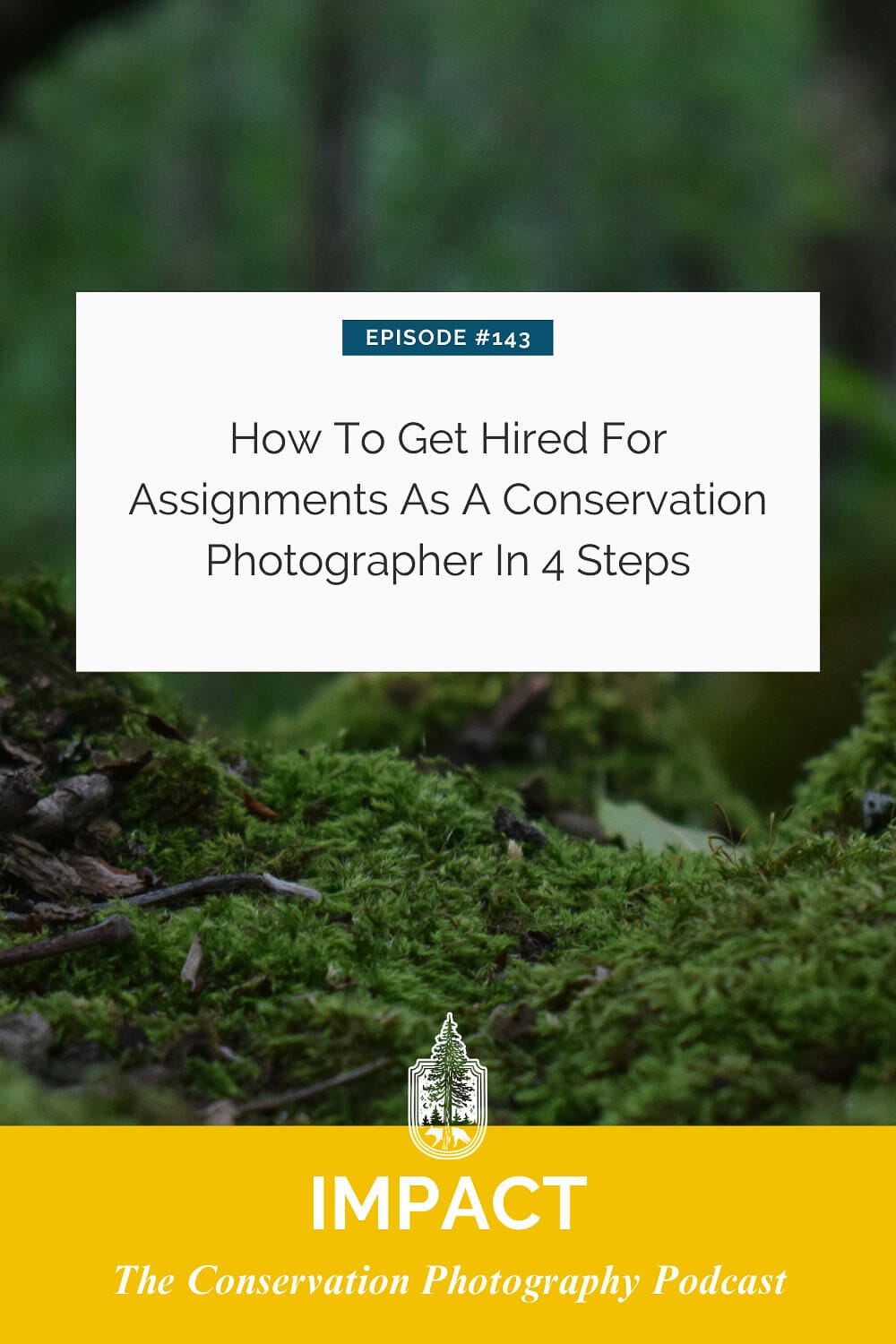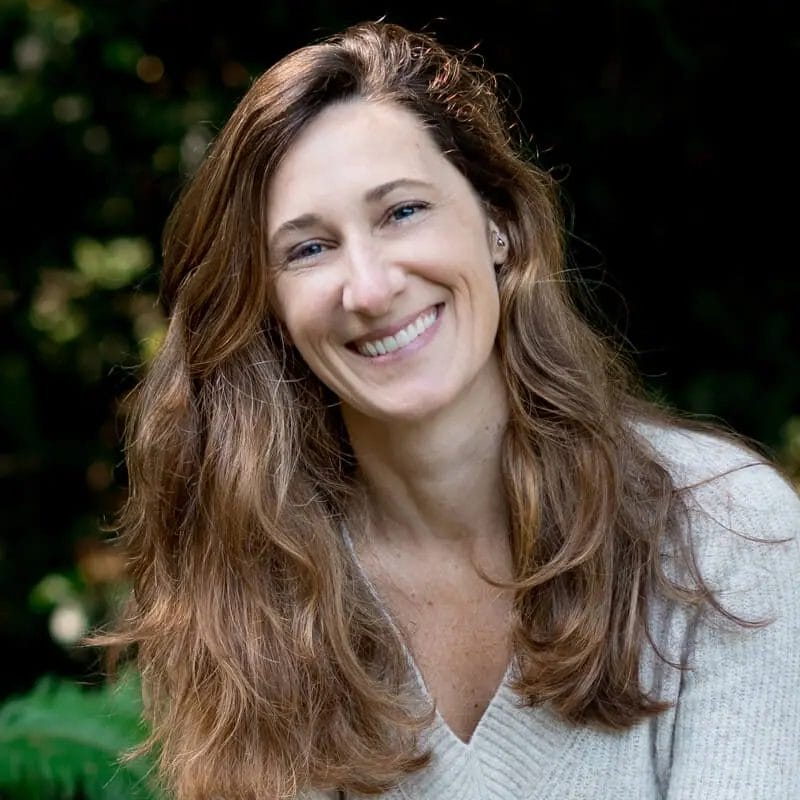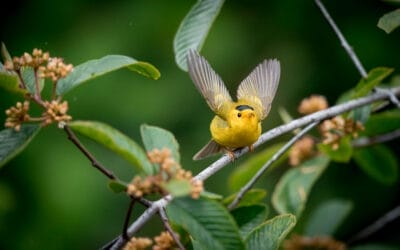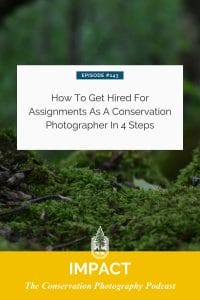If you’ve been dreaming about turning your love for nature and photography into a rewarding career, and you’re thinking assignment photography is right up your alley, then today’s episode is tailor-made for you. We’re taking a dive into how to land assignments in this field.
4 Steps to landing photo story assignments
This topic comes up every so often with my students in Conservation Photography 101. As they get some experience under their belt creating stories, the idea pops up: “Hey, what if I don’t have to come up with the ideas, but instead, a publication hires me to photograph stories they’re already working on!”
Sounds nice, right?
Let’s look at the four simple steps to take to get on that path.
The art of landing assignments in conservation photography involves training your eye to see and photograph stories, sharing these narratives with the world, building relationships with editors, and connecting with fellow photographers.
1. Training your photo storytelling eye
As a conservation photographer, your role is not just about capturing beautiful images but about telling compelling stories that inspire action. This storytelling skill is crucial for landing assignments.
Immerse Yourself in Nature: Spend time observing the world around you. Notice patterns, interactions, and seasonal changes. Look for stories in the connections and conflicts you see.
Study the Masters: Analyze the work of successful conservation photographers. Pay attention to their composition, use of light, and how they tell a story through a series of images. Understand their techniques and think about how you can apply them to your work.
Practice, Practice, Practice: The more you shoot, the better you’ll become at spotting and capturing potential narratives. Create mini-projects for yourself to hone your skills.
Get Structured Training: Consider taking courses that focus on storytelling.
2. Share Your Stories Strategically
Once you’ve captured your story, it’s time to share it. This helps you receive feedback, showcase your skills, and build a portfolio that reflects your visual storytelling style.
Build a Compelling Portfolio: Your website should be more than just a gallery. It should narrate your journey and passion for conservation. Create a user-friendly site with clear categories for different types of photography.
Curate Your Best Work: Quality trumps quantity. Select only your best images that showcase your unique perspective and storytelling skills.
Engage Through Blogging: Share behind-the-scenes insights and thoughts on conservation in your blog. This not only demonstrates your expertise but also engages your audience on a deeper level.
Leverage Social Media: Use platforms like Instagram, Facebook, and LinkedIn to share your work and connect with a broader audience. Engage with your followers and build a community around your work.
3. Build Relationships with Editors
Networking is key to landing assignments. Here’s how to build those essential relationships:
Research Publications: Identify magazines, websites, and organizations that publish conservation photography. Understand their style, themes, and what kind of stories they feature.
Introduce Yourself: Reach out to editors with a personalized email. Share your work and explain why you think it would be a good fit for their publication. Be professional but also show your passion for the subject.
Attend Industry Events: Join workshops, seminars, and conferences. These events are great places to meet editors and other industry professionals in person. Networking in real life can leave a lasting impression.
Follow Up: After making initial contact, follow up with a thank-you note or an update on your latest work. Keeping in touch shows your dedication and ongoing interest.
4. Connect with Fellow Photographers
The conservation photography community is incredibly supportive. Building connections with your peers can provide invaluable opportunities.
Join Photography Groups: Participate in online forums, social media groups, and local photography clubs. These communities are great for sharing experiences, advice, and opportunities.
Collaborate on Projects: Team up with other photographers on projects. Collaboration can lead to new insights, shared resources, and recommendations.
Seek Mentorship: Learn from more experienced photographers. Mentors can provide guidance, introduce you to their networks, and help you navigate the industry.
Share and Engage: Be active in the community by sharing your knowledge and supporting others. A strong network is built on mutual support and respect.
Final Thoughts
Landing assignments in conservation photography involves honing your storytelling skills, sharing your work strategically, building relationships with editors, and connecting with fellow photographers. Each step is a crucial part of your journey to becoming a successful conservation photographer.
So get out there, explore, learn, shoot, and most importantly, enjoy the process! Your passion and dedication will shine through and open doors to amazing opportunities.
